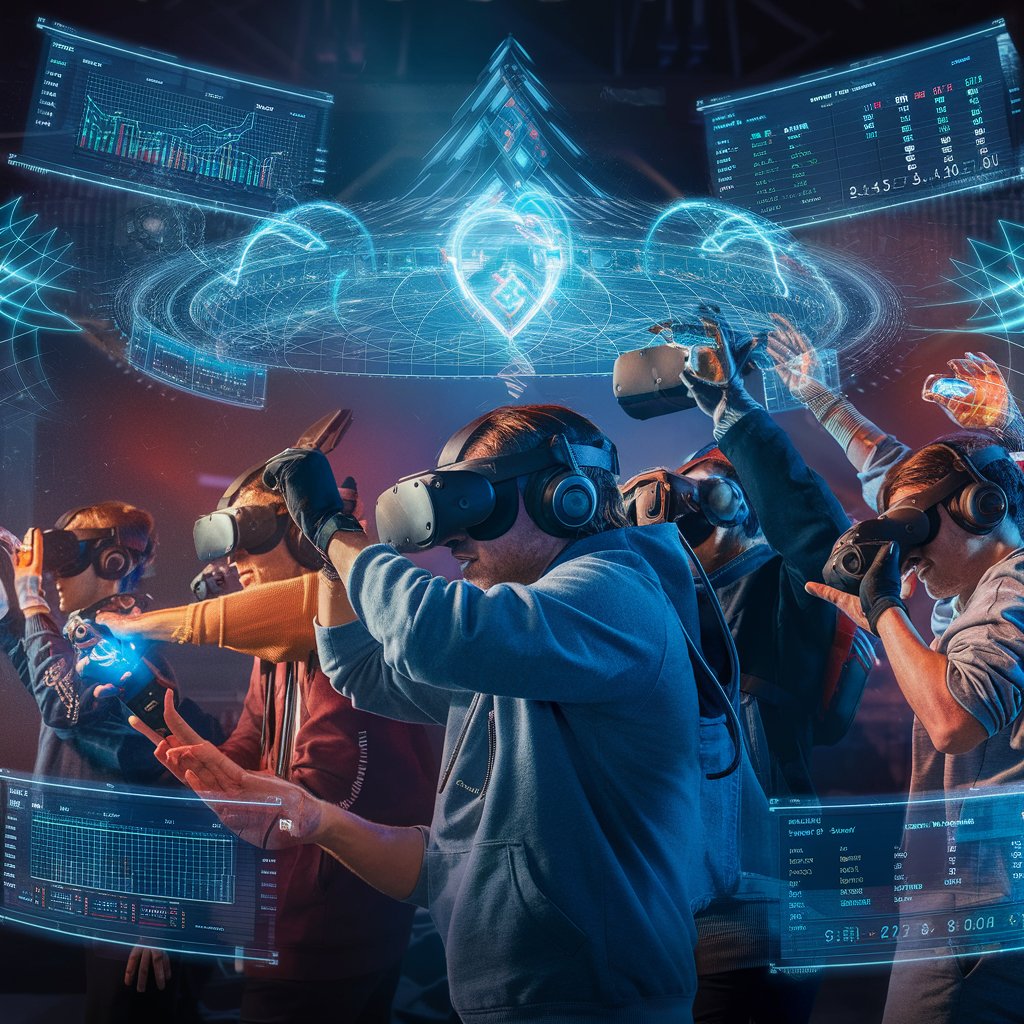Integrating artificial intelligence (AI) with virtual reality (VR) is pushing the boundaries of competitive gaming, opening up new frontiers for both developers and players. This convergence of AI and VR technology is not just enhancing the gameplay experience but is also reshaping the way competitive games are designed, played, and experienced. By combining these cutting-edge technologies, the gaming industry is witnessing a transformative shift that promises to redefine the future of competitive gaming.
AI’s role in VR gaming is multifaceted, offering enhancements in areas such as game design, player interaction, and adaptive difficulty. In VR environments, AI algorithms can create more dynamic and responsive virtual worlds, where non-player characters (NPCs) and game elements react intelligently to player actions. This capability allows for more immersive and challenging gameplay experiences, where opponents and allies alike can adapt to players’ strategies and tactics. The result is a more engaging and unpredictable competitive environment, where players must continually adapt and refine their approaches.
Moreover, AI-driven VR systems can analyze player behavior in real-time, offering personalized feedback and suggestions to improve performance. This ability to tailor experiences based on individual playstyles can be particularly beneficial for training and skill development. Players can receive insights into their strengths and weaknesses, along with targeted recommendations to enhance their competitive edge. This level of personalization ensures that training is more effective, helping players to advance their skills and stay ahead in competitive scenarios.
The integration of AI and VR also introduces innovative gameplay mechanics and features. For instance, AI can be used to generate procedurally designed environments and scenarios, creating unique and diverse virtual worlds for players to explore. This procedural generation not only adds variety to gameplay but also ensures that no two competitive matches are the same, keeping the experience fresh and exciting. Additionally, AI can enhance VR environments by providing advanced physics simulations, realistic character behaviors, and intricate game systems that respond to players’ actions in nuanced ways.
In competitive gaming, the fusion of AI and VR offers new opportunities for developing intelligent and challenging opponents. AI-driven opponents in VR can mimic human behavior and decision-making processes, providing a more realistic and formidable challenge for players. These intelligent adversaries can learn from player strategies and adapt their tactics accordingly, ensuring that competitive matches are both challenging and rewarding. This advancement in AI capabilities enhances the overall competitiveness of VR games, pushing players to continually refine their skills and strategies.
However, the integration of AI with VR in competitive gaming also presents challenges and considerations. The complexity of developing and implementing AI systems within VR environments requires significant resources and expertise. Ensuring that AI-driven elements enhance rather than detract from the gaming experience is crucial, as poorly designed AI can lead to frustrating or unbalanced gameplay. Additionally, balancing the benefits of AI with the need for fair competition and player autonomy remains an important consideration in game design.
The convergence of AI and VR in competitive gaming is heralding a new era of innovation and possibilities. By leveraging AI to enhance VR environments, create intelligent opponents, and personalize gameplay experiences, the gaming industry is setting the stage for groundbreaking developments. As these technologies continue to evolve, they promise to redefine the landscape of competitive gaming, offering players more immersive, dynamic, and engaging experiences than ever before.

